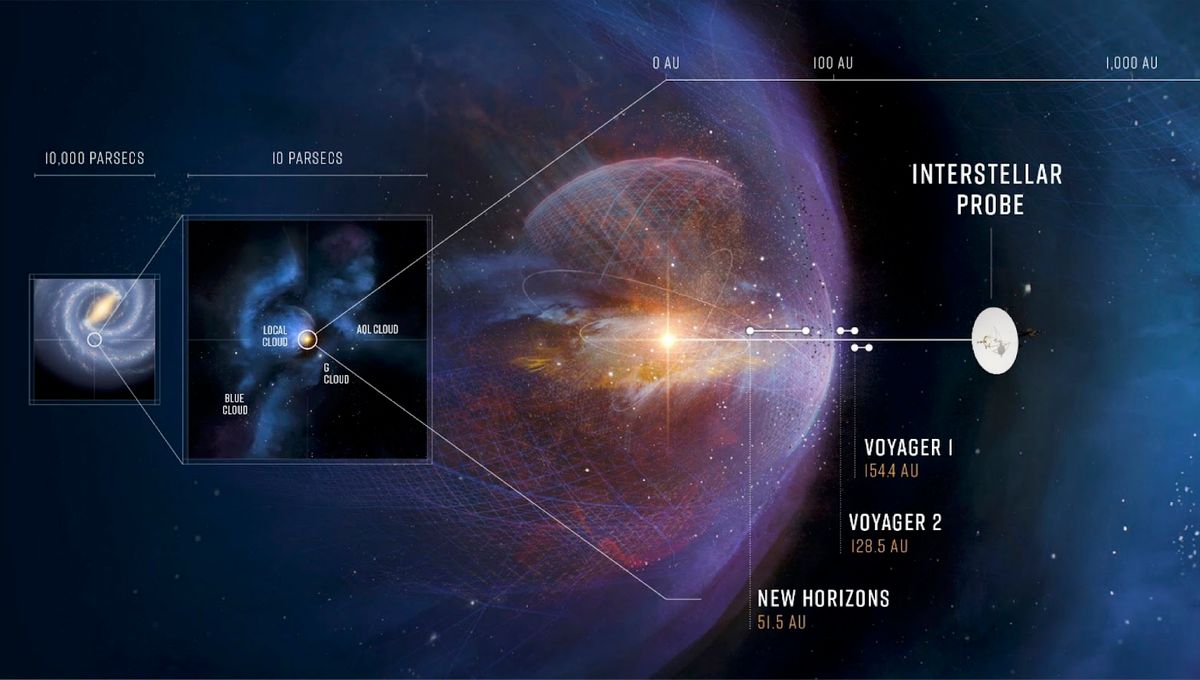
Interstellar space is not too far. We have already sent two probes beyond the heliosphere – the region where the Sun dominates with its solar wind. Our foray into the space between the stars has brought crucial new insights but remains too limited to provide a deep understanding of our place in the galaxy.
One important aspect that we are completely ignorant of is the shape of the heliosphere. The name suggests a spherical shape but we are not actually sure it is. Models suggest that it might be stretched, or even crescent-shaped, instead of spherical. Researchers have now worked out where best to send a probe to understand the heliosphere.
“Without such a mission, we are like goldfish trying to understand the fishbowl from the inside,” first author Dr Sarah A. Spitzer, from the University of Michigan, said in a statement.
“We want to know how the heliosphere protects astronauts and life in general from harmful galactic radiation, but that is difficult to do when we still don’t even know the shape of our shield,” added Dr Marc Kornbleuth, a research scientist at Boston University and co-author of the study.
The galactic radiation affects the shape of the heliosphere, making it directional. There’s the nose side in the solar direction of motion, where the heliosphere is closest to the Sun. And there’s the tail, that extends a bit like the wake of a boat. A mission proposal in 2021 considered possible direction and assumed a probe 45 degrees from the nose was optimal. This new work disagrees.
Spitzer and colleagues crunch the numbers of six possible trajectories with the idea of maximizing scientific outputs. After all, it would take many years to leave the heliosphere. They found that going through the flanks would be a great position to study interstellar space and get a better idea of the shape of the heliosphere.
The two spacecraft in interstellar space are Voyager 1 and 2. They were not designed for this purpose, but to study the giant planets, so their ability to study the interstellar plasma has been limited. And they do not get too far off the nose. At the tail, the interstellar plasma might be able to be injected into the heliosphere. But we can’t be sure unless we can get a proper look at it from the outside.
“If you want to find out how far back your house extends, walking out the front door and taking a picture from the front sidewalk is likely not your best option. The best way is to go out the side door so you can see how long it is from front to back,” said Kornbleuth.
“A future interstellar probe mission will be our first opportunity to really see our heliosphere, our home, from the outside, and to better understand its place in the local interstellar medium,” added Spitzer.
Voyager 1, which is currently experiencing a major computer problem, has traveled about 163 astronomical units (AU) from us. One AU is the Earth-Sun distance and a probe that takes the path drawn by Spitzer and her team would travel to 400 AUs with an expectation that it would survive over many decades to 1,000 AUs.
“This analysis took a lot of persistence. It started small and grew into a great resource for the community,” said Susan Lepri, a professor of climate and space sciences and engineering at the University of Michigan and the senior author of the study.
A paper describing this work is published in Frontiers in Astronomy and Space Sciences.
Source Link: This Is The Best Way To Escape The Solar System And Get To Interstellar Space